Exclusive
Water from the rot
Published
5 years agoon
By
Editor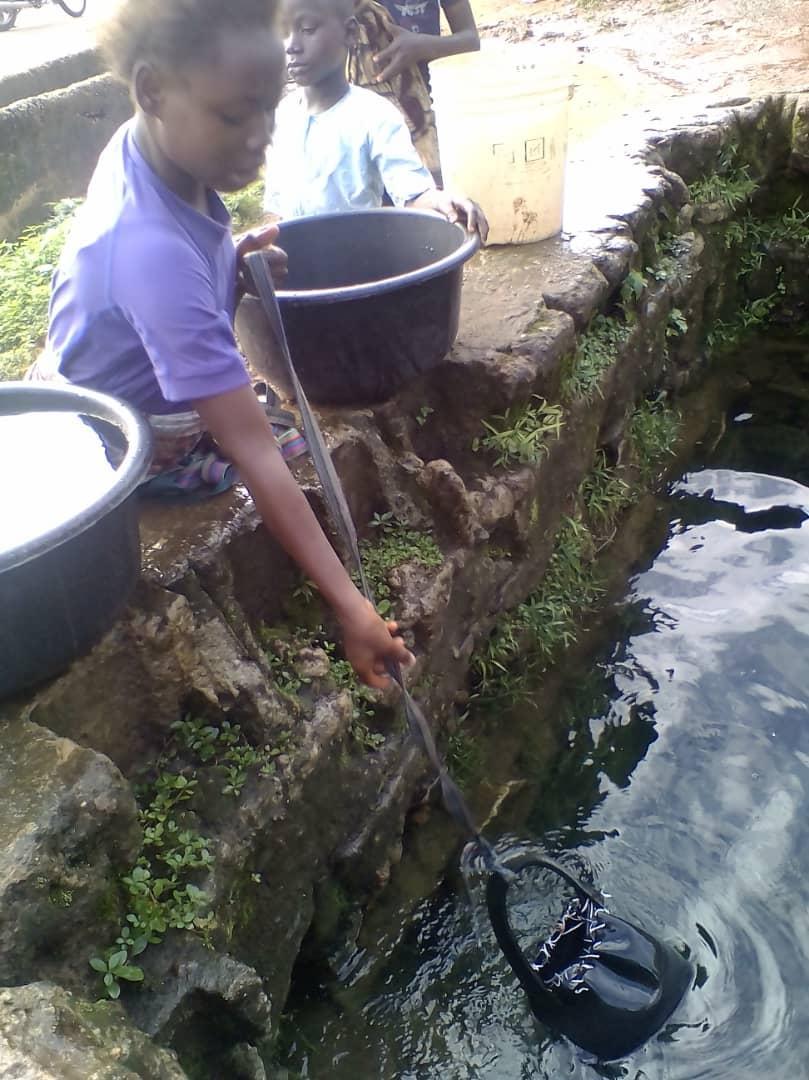
As water projects rust away across the southwest, its river basins authorities revel in the daydream they’re watering millions—-thanks to a government standard ticking off anything that fills a cup as potable
By Elijah Olusegun
Ikoyi is just shouting distance from Ogbomosho. But the ride in a Golf Volkswagen crammed with seven passengers, including the driver, made the 20 minutes’ trip last an eternity that evening on August 24.
“Not many commercial vehicles are on this route,” the driver explained.
Vehicles, however, weren’t the only scarce things around here; potable water was also gold dust at Ikoyi and its distant neighbours Igbeti and Igboho—all in Oyo.
Located in the Oriire LGA, Ikoyi has just two main streets branching from the major road that streaks through the community. Up the first street, on a lot choked with weeds, sat an abandoned multi-million-naira water supply scheme the Ogun-Osun River Basin Development Authority (OORBDA) funded in 2014. A contractor not registered with the Corporate Affairs Commission, OKD Construction Company, bid and got the contract. Somewhere along the street also stood a hand-worked borehole, amidst a crowd of girls fetching water in the morning.
It was the only source of water they had in that neighbourhood. “We drink it, use it to cook, wash, and bathe,” one of the girls told the National Daily. “Just that it doesn’t taste smooth in the mouth.”
Hardness is just one distaste a throatful of untreated water offers the thirsty in the rural communities the OORBDA covers across five states in the southwest. There are a lot more unpalatable feels such water leaves in the mouth of millions of Nigerians, not only in the southwest, but across the nation.
“We drink it, use it to cook, wash, and bathe. Just that it doesn’t taste smooth in the mouth.
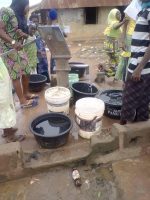
”
Money down the drains
When it comes to potable water supply, the figure Nigeria is flaunting, 69 percent, and that of the Water Aid, 59 percent, are way off the mark. Less than 10 percent of Nigerians actually have access to good water, UNICEF’s water chief Zaid Jurji revealed in April.
President Muhammadu Buhari made it even clearer November 8 when he declared a state of emergency on the Water, Sanitation and Hygiene (WASH)sector. “WASH services at the rural areas are unsustainable,” he said. “Forty-six percent of all water schemes are non-functional, and the share of our spending on WASH sector has been declining from 0.70% of the GDP in 1990 to about 0.27% in 2015 which is far below the 0.70% at the West African regional level.”
No denying that access to a duly treated water supply is still a far cry from Nigerians’ realities. Not necessarily for lack of funds. Inadequate planning and poor monitoring during and after procurement worsen the situation. And the procuring agencies—the RBDAs—have responsibility for the failure to get value for tax-payers’ monies.
Infrastructure for purified water supply and distribution shows up, year in year out, in government budget; funds also funnel down for contract awards. But the contracts, in most cases, never come to completion—because of a badly managed procurement process by the River Basin Development Authorities.
The OORBDA and its Benin-Owena counterpart cover the southwest and Edo. Both agencies and their ministry headquarters spent N542 million on no fewer than 60 water supply projects for the seven states between 2014 and 2017. The total budget for the projects stands at released out of the N2.1 billion. Twenty-five of them included water supply schemes, boreholes, and water treatment plants construction and rehabilitation.
Since 2014, however, only seven of them were completed, mainly solar powered boreholes—at Ebutte, Ijiogba ; Ita Odo in Efon Alaaye, Ekiti; Odejomo in Igbotako, and the two at Imeri Ose, Ondo. Plus some water supply schemes, mostly by the ministry headquarters—at Ojirami in Owan East, Edo; and Osogbo and Ilobu, Osun.
Others were never started at all. Nor completed. Nor rehabilitated.
In Ado, Ekiti, an offsite sewerage treatment plant was supposed to have been completed in 2016 with N11 million proposed in the year’s budget. A 2016 capital release document on BudgIT revealed that for this, N5.7 million was released. But the project, supervised by the water ministry itself, never took off. It was not even sited at all. Officials of the state’s water corporation told the National Daily there was no such big project like that in the state—to the best of their knowledge.
Likewise the Ifewara Water supply Scheme and that of Olode, both in the Ife region, Osun. The Ifewara project had a N10.5-million budget in 2014, pushed forward to 2015 as N6.7 million, and N10.5 million in 2017. Olode, too, saw its N38 million budget in 2014 dip to N10.7 million in 2015, and buoyed up again to N23 million in 2017.
Ewohimi, Agua Irrua, and Agbede in Edo had a similar pattern: the RBDA budgets shrinking and swelling for two or three years with no visible project or rehabilitation to show for it. No fewer than 11 projects—one in Lagos, three in Oyo, two in Osun, and five in Edo—went through this cycle.
For all the failures, there are culprits many Nigerians and the authorities will readily blame: lack of funds, misappropriation, and corruption. They’ll also blame budgetary irregularities.
The agencies didn’t respond to the National Daily’s questions and the FOIA requests on how this trend came about, and whom to blame. “The FOIA doesn’t compel us to release certain information,” Niyi Saliu, the OORBDA’s public relations officer, told the newspaper by phone. But he was countered with the fact that requests for details of companies involved—and government monies invested—in projects are no security information the Act excludes. The spokesman then turned around, and made an issue of the FOIA requests by electronic means, insisting his organisation responds to requests sent by post only. The initial request bounced back from the agency’s dead official email [email protected] , the only one on www.oorbda.com.ng. It was sent again by phone. “You have to make a formal request by writting (sic) to the managing director. That is what we can work on. Thanks,” Saliu advised the newspaper in a text message.
The International Centre for Investigative Reporting, Abuja, also intervened. Its editor Abiola Amzat, on behalf of the National Daily, couriered the FOIA requests to both RBDAs October 15. The procurement units in the agencies are run by the managing directors. After three days, one Precious N. at the BORBDA received the mail, and so did Blessing O. at the OORBDA, same day.
Neither Akintunde Soyemi, the managing director of the OORBDA, nor his counterpart Saliu O. Ahmed responded to the requests after the seven days the Act mandates. Both RBDAs have thus violated the FOIA. They also flouted the online disclosure section of the PPA. There is no procurement information on either agency’s website, contrary to the PPA which provides for online disclosure.
All this weasling by Saliu and his agency was not unexpected of government agencies. Official omerta rules. When they choose to open up to contract enquiries like this, a boilerplate response comes handy: no funds released. It sounds really pardonable—that just N542 million was available for both agencies to fund about 60 water supply projects worth N2.1 billion in four years. But this alibi flies in the face of Section 16, subsection 4.2 (b) of the PPA. It states: “Based only on procurement plans supported by prior budgetary appropriations; and no procurement proceedings shall be formalised until the procuring entity has ensured that funds are available to meet the obligations…”.
Even with, at least, half contract sums released, many projects were still abandoned at different levels of completion. Some in Oyo township, Igboho, and Ikoyi in Oyo; some in Edo, including those at Imiegba, Uromi General Hospital, and Avibiosi; and others at Idi Araba, Igbotako and Araromi Okpe in Ondo.
So across the seven states, abandoned and uncompleted water supply projects, corroding overhead tanks, over-taken by weeds, adorned the terrain. And the agencies which awarded the contracts sat pat. No monitoring. No evaluation.
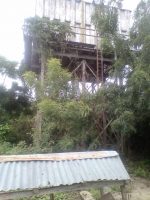 At Agbede, for example, no one had ever heard of the BORBDA since 2000. But the agency earmarked for the community a multi-million-naira water supply scheme four years ago. “The last time we had any federal government water project here was 18 years ago,” Suleman Bashir, an imam, told the National Daily.
At Agbede, for example, no one had ever heard of the BORBDA since 2000. But the agency earmarked for the community a multi-million-naira water supply scheme four years ago. “The last time we had any federal government water project here was 18 years ago,” Suleman Bashir, an imam, told the National Daily.
The scheme was budgeted for in 2014, 2015, and 2017, starting with N25 million, then falling to N4.3 million, and N2.5 million respectively. If anything, this appears a release by installments. There should, then, be something, a project, to show for it. But as of August 2018, when the National Daily checked, there was nothing—not as much as groundbreaking—in the Edo North community. And the people in that water-poor town couldn’t be grumpier. “These wells…you see people come from all over the town to fetch water here,” said Bashir, pointing to two wells close by. One, covered, was almost at the same level with the ground, making it easy for a run-off to flow in when it rained.
At Imiegba, there were things to flaunt, a dash of favours here and there. The town is some 40 minutes’ ride from Auchi, and 20 minutes from Okpekpe. The federal government presence which eluded Agbede hung heavy here. There were lots of boreholes, five at least, bearing names of different clients: the Energy Commission of Nigeria, the MDG Office, SURE-P, and others. Iron pipes and beams propped up shimmering aluminium-coated overhead tanks, overlaid with slabs of useless photo-voltaic cells for trapping solar energy. None of those boreholes had water.
By 2015, the BORBDA came and added its own to the columns of dry boreholes at Imiegba. The budget was N5.1 million when the water supply scheme took off. The amount ballooned to N8.5 million in 2017. And all the agency had, for that amount, was one solar-powered borehole, not in use, down a slope stretching from the centre of the community. According to residents, women and children had to descend further downhill to fetch water from streams. Or they put out their buckets when it rained, to collect water for drinking, cooking, and other household uses, a resident complained. The contractor of the project was Solia International Ltd, an unregistered bidder who won the contract award anyhow.
Unregistered companies nailing contracts from the RBDAs appears just one of those things, unlawful as it is. In the National Competitive Bidding the PPA approves for procurement, eligibility of a bidder matters. In Section 25(2) of the Act, the fourth clause provides that: “to be eligible for contract award, the domestic contractors shall have a valid and appropriate registration with the Corporate Affairs Commission at the time of submitting the bidding”.
OKD Construction Ltd, Mommex Global Resources, Mid-South Development Investment Company, Aliters, and Solia International Ltd are all unregistered companies. But they clinched the water supply contracts which they abandoned—or left uncompleted—at Ogbomoso-Ikoyi, Idi Araba, Uromi General Hospital, and Imiegba respectively.
At Avibiozi, Owan West, the contractor had no face. All the community knew was just one borehole, idle, facilitated by Hon. Pally Iriase, completed last year, and its engine spirited away later. “Some people came, put it up, and, after that, they left,” said Ayo Obuori, a journalist and spokesperson for Avibiozi. What they didn’t know was the contractor’s identity, and the N8.1 million voted for that one borehole.
Only phantom contractors could do that, and get away with it. Maybe not necessarily. Registered ones, too, can unlawfully string out the duration of projects, and get by. Consolidated Construction Company and RTD Thompsons are registered entities. But their projects, water supply schemes, had gone to the dogs in Oyo and Igboho.
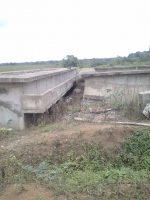
Oyo and its environs got the N50-million water supply scheme started in 2014. Consolidated Construction bagged the award. Sited on the premises of the state’s zonal water corporation dam at Erelu, the scheme was supposed to supply no fewer than six other towns around Oyo, an official told the newspaper. By 2017, the OORBDA shunted the scheme forward again as a new project, with N35 million budgeted. Not much was done still. Ducts, trenches, concrete slabs, reservoirs were all over the site. And weeds, too.
The water supply scheme at Igboho, close to the Igboho dam, only needed rehabilitation. And the OORBDA awarded that to RTD Thompsons for N30 million in 2014. It came up again in 2017, tagged ‘on-going’ in the budget the agency presented. There a line item coded ORYPT 0156065 was asking for a lump sum—N192 million—“as payment of outstanding liabilities on projects (FESTAC Town Water Supply Study and Design, Igboho, Ilegbon, and Ogbomosho Water Supply Schemes…)”, in addition to five other projects.
Apparently, on paper, the Igboho project was nearing completion last year. The heaps of ducts, weeds, and empty buildings on the site, however, gave no hint of completion—but of abandonment.
Like Oyo, Igboho, with a dam, a state, and a federal water supply schemes, now rely largely on private boreholes, and a couple of government’s, for water supply. No question asked. The client (OORBDA) and the contractor have given up on the scheme.
Section 8 of the PPA is clear on issues of contract management and procurement reporting. Thirteen areas are addressed, including contract effectiveness, performance monitoring and evaluation, and delays in performance. Because a lot depends on it, monitoring and evaluation of water supply projects even gets its own budget. Both RBDAs proposed a total of N109.5 million for that in 2014, 2015, and 2017 budgets. The FOIA requests for information on how much the two agencies got and spent were not responded to. Which made it difficult to verify how well they monitored the projects, and why Consolidated Construction, OKD, Aliters, Mommex, and others bolted—or dawdled.
Sour taste in their mouths
While the water supply projects waste away in communities across the southwest and Edo, the people have to drink water from other sources—indecent yet qualified by the authorities.
At Olode, Ife South, Osun, water was priced above rubies; it was more appreciated than road construction. “The governor is constructing roads all over the places. Are we going to drink roads?” An artisan whose workshop was at the foot of a multi-million-litre water reservoir abandoned in the town told the National Daily.
It was not as bad as having no water at all there. He and his neighbours, indeed the entire Olode, had a source from which they drank: Gbaro. Exposed, mossy, crowded, free, Gbaro had its own problem, too. It was corrosive, according to the lab analysis the National Daily did.
But that was all that neighbourhood at Olode got: acidic water, amidst a number of water supply projects that dotted the town. At least there were three of them in that axis. One was at Ayeoba, a village about 500 metres before Olode. There was a reservoir, too. And, the federal government, through the OORBDA, in 2014, awarded another water supply scheme for Olode. The scheme was initially costed at N38 million, and subsequently budgeted for in 2016 and 2017, the value zig-zagging all along. Yet the Olode natives had no treated water to drink, except Gbaro laced with carbonic acid.
At Iyin Ekiti, a suburb of Ado, in Ekiti, under the Benin-Owena River Basin Development Authority, the problem was different. Fifty-one hand-pumped boreholes were awarded to another unregistered company, Mid- South Development Investment Ltd, by the BORBDA in 2016 for Iyin, Araromi, and others. The N4.5 million boreholes were supposed to make up for the abandoned water supply scheme at Iyin, and provide safe water for the communities.
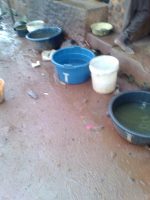
At one of the five such boreholes in Iyin, the water gushing out of the pump was clear, visually, based on the laboratory analysis result. Except that it was adulterated. Iron had dissolved in it. Likewise ammonia, calcium, and magnesium. And the community just had no choice.
“It’s what we have been drinking,” Oluwafemi Falodun, a resident, told the National Daily. He and his neighbours had thought their Senator Fatima Raji-Rasaki was delivering the goods by giving them the boreholes. Five, of the 51 contracted, were dug last year, about two years after the award, for N2.5 million released in 2016.
Many of the water supply contracts in those four years the newspaper investigated were boreholes. Only a handful—in Osogbo and Ilobu, both completed, and one that never took off at all in Ado—were water-treatment projects. Even some of those sited in health institutions—the Imeri Ose Health Centre, Ondo; and the Uromi General Hospital, Edo—were boreholes, solar powered, with overhead tanks. However, many of them were not completed. And, as usual, the communities had to rub along with available alternatives, pure or murky.
At the Uromi General Hospital, treated water was a mirage. The options were a N10 million solar-powered borehole taking forever to complete, and an earthy system the hospital management put together to store and distribute rain water and tanker supply. The hospital was 56 years old. Its water supply system was also as old, and the water unhygienic, according to its Chief Medical Director Erohubie Christian.
On the premises were big plastic tanks positioned for catching rain water from iron-sheet roofing browned from years of rust. There was also an uncompleted water project close to the gate, and at the eastern end a pre-war overhead reservoir stood.
Christian told the National Daily the long process the hospital took to run its water supply: bought water at N10,000 a truckful, pumped it down a hand-dug well, from there into an underground tank, then into an overhead tank, and finally into pipes. He said they, sometimes, channelled and stored up rain water harvested from the roof.
Half of the fund budgeted for the hospital borehole—about N5 million—had been released. Aliters Investment Ltd got the contract in 2016. The company was unregistered, based on a CAC database search. The law guiding government award of contracts, the Public Procurement Act, Section 5, considers eligible only registered companies, with at least three years of experience, and tax payment, to bid for government contracts.
But at Iyin, the Uromi General hospital, and other places, unqualified contractors had won contracts from RBDAs. The client and the contractors then bungled those projects expected to supply potable water to the communities.
Water samples taken from Iyin and Olode were analysed at Remaben Scientific Services Ltd in Lagos. The results revealed the sources contained lots of ammonia, iron, calcium and acid. Except that of the Uromi General Hospital certified okay. “Sample is in conformity with Nigerian Standard for Drinking Water Quality (NIS 554:2015), hence declared fit for human consumption,” lab analyst Akinniyi O.R. wrote in the results.
It beats imagination what authorities say is potable water in Nigeria. The confusion thickens when they muddy the waters by juggling some important keywords: “access to water supply” and “potable water”.
The ministry of water resources likes to boast it has implemented policies and programmes that grant 69 percent of Nigerians access to water supply—water supply is tacitly expected to be construed as potable—potable by the Nigeria Standard Drinking Water Quality. And the NSDWQ guidelines, which the ministries of water resources, health, and the Standard Organisation of Nigeria put together in the Nigeria Industrial Standard 554: 2015 document, covers most drinking water sources, including untreated ones like those at Olode, Iyin, Ikoyi, and the Uromi General Hospital.
UNICEF’s latest findings, and those of the Nigeria Bureau of Statistics, however, have trumped the standard Nigeria is clutching at to qualify potability of water.
More revealing was the NBS latest survey. Over 37,000 households were studied between September 2016 and January 2017, and information was gathered on water quality from a nationally representative sample of 13,605 household members. About two-thirds of them (64.1 per cent) had access to improved water sources: pipe-borne water, boreholes, and collected rain water.
But the survey also found out that 90.8 per cent still drank water contaminated by E. coli, a strain of water-borne bacteria, from the improved sources and seedy others, like water tankers, wells, protected or not.
Still, the NSDQW qualifies all of them as potable.
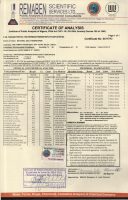
Nothing seems amiss about this standard. “It’s not compulsory surface or ground water are (sic) bad microbiologically,” said Remaben’s chief analyst Miachi Benjamin when the National Daily showed him Gbaro’s picture. Benjamin is a member of the Institute of Public Analysts of Nigeria (IPAN), and his lab at Anifowoshe, Ikeja, Lagos, is IPAN-registered, with Certificate No: 0016743. For the methods, the lab used the American Public Health Association and American Society for Testing and Material. With all his professional frills, Benjamin sure had the courage of his conviction. He stood by his lab analyses and findings.
In the results, Gbaro, for instance, exceeds the maximum level of carbondioxide–50– the NIS prescribes. Free carbondioxide in the sample (mg/l) is greater than 2000. And carbondioixide reacting with water precipitates carbonic acid, thus raising the pH, the acidity level, of the wellspring.”The pH value, 4.6, falls below the NIS 554:2015 acceptable range of 6.5-8.5 for drinking water,” the Remaben analyst remarked. “pH correction via dosing of soda ash solution is therefore required.”
At Iyin, the contaminant concentrations were disturbing. Carbondioxide, 59; ammonia, 0.94; iron, 2.3; magnesium, 14.9—all present in doses above or close to the maximum figures. The interaction of these elements in the soil with underground water can brew unhygienic cocktails.
For ammonia, its presence above the 0.05 cap, as it was at Iyin, indicates traces of fecal waste, according to a UN document on ammonia in drinking water. The excess carbondioxide reacts with water to produce some kind of acid. Brown coloration and rusty debris in the Iyin sample also attest to the high level of iron in the water the community drank.
A water treatment plant centrally located would have taken care of that before it got to the community. That is in an ideal situation where government funds accomplish what they are voted for.
Between 2015 and 2017, the water ministry annual budgets added up to N174 billion. Of this, the 12 RBDAs got about N94 billion, that was 54 percent of the funds. At least N2 billion of this was voted for water supply projects across the southwest and Edo between 2014 and 2017. And yet the amount released, less than N0.5 billion, was wasted on projects contractors abandoned or never started at all.
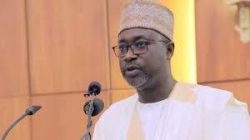
Water Minister Adamu
Promise that holds no water
But the water ministry is asking for more–for a better future in water supply. It’s been trumpeting its need and request for more funds to ply a multi-billion-naira medium- and long-term strategy framework for 2016 to 2030. The ministry claims it needs N386 billion to bring potable water to Nigerians, and hit No. 6 of the Sustainable Development Goals: access to potable water and sanitation for all by 2030. The first phase needs N108 billion to water 20 million people by 2020.
In the short run, 15 of the 41 ongoing water projects have been prioritized for completion so they can supply 620400 M3/day to 14 million people. The contracts were valued at N47 billion. About N12 billion has been paid to contractors—though no bang for the bucks so far. Just 20 million people, out of a population pushing 200 million, drink safe water; and 59,000 kids, the ministry said, die of water-borne diseases annually.
Notwithstanding, the federal government has some sort of rock-solid faith in the power of the bullet-points and charts that fill up the document. “I am confident that implementation of the roadmap will be accelerated as we move into the third quarter of the year and beyond,” Water Minister Suleman H. Adamu said at the launch of the roadmap.
Whatever command performance the ministry sweats to deliver with the strategy, the contract balance, N35 billion, for the short run, remains an albatross. Raising that amount worries the ministry as it looks to get 40 percent of the entire fund by panhandling to development partners.
Many procurement watchers, however, believe something else should bug the federal government: how the RBDAs are beating the procurement laws, water supply projects decaying, and monies washing down the drain.
This investigation was supported by Ford Foundation and the International Centre for Investigative Reporting, Abuja.
Trending

 Football6 days ago
Football6 days agoGuardiola advised to take further action against De Bruyne and Haaland after both players ‘abandoned’ crucial game

 Health & Fitness16 hours ago
Health & Fitness16 hours agoMalaria Vaccines in Africa: Pastor Chris Oyakhilome and the BBC Attack

 Aviation1 week ago
Aviation1 week agoDubai international airport cancels flights as flood ravages runway, UAE

 Featured5 days ago
Featured5 days agoPolice reportedly detain Yahaya Bello’s ADC, other security details

 Comments and Issues6 days ago
Comments and Issues6 days agoNigeria’s Dropping Oil Production and the Return of Subsidy

 Education5 days ago
Education5 days agoEducation Commissioner monitors ongoing 2024 JAMB UTME in Oyo

 Business5 days ago
Business5 days agoMaida, university dons hail Ibietan’s book on cyber politics
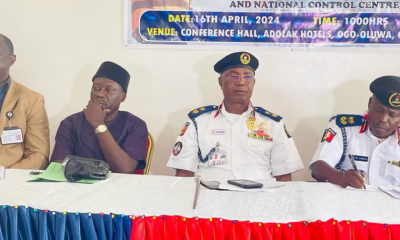
 Education1 week ago
Education1 week agoOsun NSCDC solicits cooperation towards national assets protection

